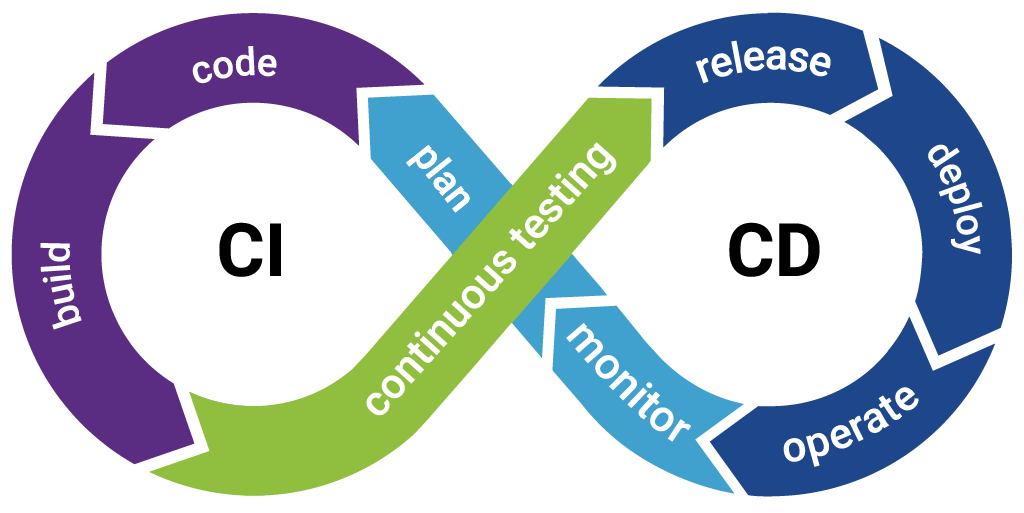
Continuous Integration & Delivery
CI/CD is a method to frequently deliver apps to customers by introducing automation into the stages of app development. The main concepts attributed to CI/CD are continuous integration, continuous delivery, and continuous deployment.
What is CI/CD?
CI/CD is a way of developing software in which you’re able to release updates at any time in a sustainable way. When changing code is routine, development cycles are more frequent, meaningful and faster.
“CI/CD” stands for the combined practices of Continuous Integration (CI) and Continuous Delivery (CD).
Continuous Integration is a prerequisite for CI/CD, and requires:
- Developers to merge their changes to the main code branch many times per day.
- Each code merge to trigger an automated code build and test sequence. Developers ideally receive results in less than 10 minutes, so that they can stay focused on their work.
The job of Continuous Integration is to produce an artifact that can be deployed. The role of automated tests in CI is to verify that the artifact for the given version of code is safe to be deployed.
In the practice of Continuous Delivery, code changes are also continuously deployed, although the deployments are triggered manually. If the entire process of moving code from source repository to production is fully automated, the process is called Continuous Deployment.
A litmus test for doing CI/CD
If any developer in your team can stop what they’re doing right now and ship the current development version of code to production in 20 minutes or less without anyone stressing about what could happen — congratulations, you’re doing CI/CD!
CI/CD principles
Continuous Delivery practices take CI further by describing principles for successful production deployments:
- Architect the system in a way that supports iterative releases. Avoid tight coupling between components. Implement metrics that help detect issues in real-time.
- Practice test-driven development to always keep the code in a deployable state. Maintain a comprehensive and healthy automated test suite. Build in monitoring, logging, and fault-tolerance by design.
- Work in small iterations. For example, if you develop in feature branches, they should live no longer than a day. When you need more time to develop new features, use feature flags.
- Developers can push the code into production-like staging environments. This ensures that the new version of the software will work when it gets in the hands of users.
- Anyone can deploy any version of the software to any environment on demand, at a push of a button. If you need to consult a wiki on how to deploy, it’s game over.
- If you build it, you run it. Autonomous engineering teams should be responsible for the quality and stability of the software they build. This breaks down the silos between traditional developers and operations groups, as they work together to achieve high-level goals.
To make CI/CD a reality, you need to automate everything that you can in the software delivery process and run it in a CI/CD pipeline.